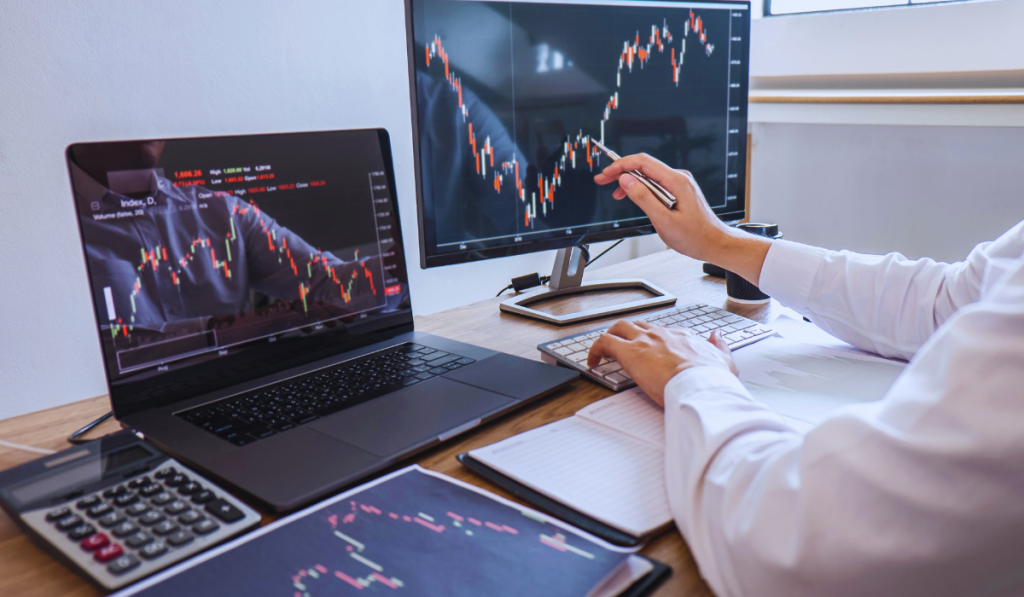How to Trade in Forex Trading? A Concise Approach to Starting With Confidence
A spark lit up the room. The concept took root after a buddy boasted about how they had gained money by trading currency pairings. By pulling out your phone to look up “FX,” you entered a realm where individuals trade currencies for financial gain.
One of the most exciting financial markets in the world right now is forex, or trading foreign currencies. Traders have a plethora of options to participate with its 24-hour, five-day-a-week operation and daily trading volume of over $6 trillion. The actual challenge, however, lies in learning how to trade forex successfully, which transcends merely using figures and charts.
Doing nothing more than pressing the buy or sell buttons won’t make you a forex market expert. It’s more about forming the attitude, competence, and framework to approach it on purpose, not by chance.

Gaining Familiarity with the Forex Market
Having an understanding of the market’s characteristics is beneficial before diving into forex study. When two currencies are exchanged, it is called “foreign exchange,” or forex. As an example, selling dollars and buying euros is necessary to purchase the EUR/USD pair.
The ongoing comparison to other currencies is the reason why they are traded in pairs. There are three types of couples that these individuals belong to:
- Along with USD/EUR and USD/JPY, USD is the most actively traded major pairing.
- Minor Pairs: Although the US dollar isn’t there, strong foreign currencies like the EUR/GBP pair should be.
- Exotic currency pairings contain both developed and developing market currencies; an example of this would be the USD/TRY.
- Prior to making your first transaction, it is essential to comprehend the interconnectedness and influence of world events on money.
Get the groundwork right first.
Like learning to drive for the first time, entering the world of foreign exchange trading unprepared is a huge risk. Despite the temptation to act immediately, it is essential to exercise patience due to the rapidity with which the market fluctuates.
- You need a solid foundation of information to trade FX effectively. Get the hang of:
- Forex lingo includes concepts like spreads, leverage, pip, lot, and margin.
- Currency exchange rates’ associated costs
- What factors (political shifts, interest rates, and news) influence price fluctuations
- Basics of reading forex charts
This learning period doesn’t have to be overly technical. Watching introductory films, reading instructions in plain English, and keeping an eye on the market are all great ways to ease into it.
Selecting a Trustworthy Trading Platform
An FX trading platform is essential for any trader serious about risk management, trade execution, and chart analysis. If you’re just starting off, I recommend starting with an intuitive platform like MetaTrader 4 or 5.
- Prior to deciding on a platform or broker, make sure to:
- The validity and present status of regulations
- Costs and spreads in trading.
- The possible combinations of currencies
- The ease of use
- Is a trial account available?
In the beginning, a demo account is really helpful. By reading charts and making trades, you can put your knowledge into practice without taking any risks.
Get to Know Technical Analysis Fundamentals
Mastering the art of chart reading is a crucial part of being a successful foreign exchange trader. Price fluctuations, which are not always random but do tend to follow patterns, are studied by traders using technical analysis.
- Get the hang of:
- Candlestick charts display the opening, closing, and changing prices over a period of time.
- Price levels may stall or reverse at levels of support or resistance.
The Relative Strength Index (RSI), Bollinger Bands, and Moving Averages are all examples of indicators.
Identifying patterns: rising, falling, or sloping
Mastering the art of technical analysis is a process that demands dedication and effort. Learn the behavior of a handful of signals at a time rather than trying to commit hundreds to memory.
Create an Easy Trading Strategy
Attempting to navigate a ship without a compass is akin to trading without a plan. With a plan in place, you can avoid making rash, emotionally-driven decisions. The best approaches for newcomers are those that are straightforward and based on rules.
- Here are the main elements of a fundamental forex strategy:
- When to use an entry signal to enter a trade
- When to terminate a contract using an exit strategy
- The right amount of danger (risk management)
Should one refrain from trading at specific times, as before big news releases?
A breakout approach or trend-following setup could be your first move. Backtest with past data once you’re comfortable using it on your sample account.
Get Right On Top Of Risk Management
Proper risk management is an often-overlooked aspect of learning foreign exchange (FX) trading. Taking on too much risk in one deal may derail even the best-laid plans.
Take note of these guidelines:
- In no transaction should you put more than 1% to 2% of your total investment at risk.
- Establish your stop-loss thresholds prior to commencing trading.
- You should be aware that your risk-to-reward ratio is at least 1:2.
- Stay away from revenge trading and overtrading following a loss.
The goal of trading is to gain experience by playing the game over an extended period of time. With the right risk management strategies in place, you can emerge from losing streaks unscathed.
Moving on to Real Trading Slowly
Start slowly until you’ve had enough practice and are comfortable with your strategy, but now is the moment to launch. Just as you would approach practicing with a greater sum with a method, you would do the same with a smaller initial commitment. Trading in the real world, as opposed to a simulated environment, can be emotionally taxing. As your financial situation changes, you will feel the burden. It is advantageous to begin with a small scale. Without emptying your bank account, it strengthens your emotional resilience.
